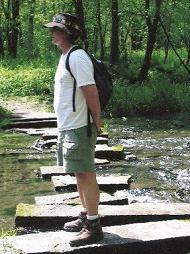Coalition campaigns and the 2010 race for Governor in Minnesota.
Coalition building is an important factor in winning election campaigns, however, coalitions carry the risks. Watering down a candidates message, the competing interests of disparate groups lack of cohesion. One campaign that depended immensely on a coalition to win is the campaign to elect Mark Dayton the governor of Minnesota. After a crowded, and sometimes intense, endorsement and primary battle the risk existed that there would not be enough time to recover from the bruising effort to pick a DFL candidate. In Minnesota the Democratic party is actually a coalition itself, being the Democratic-Farmer Labor Party. The coalition assembled to assist Mark Dayton to victory, while fraught with plenty of risks, overcame the pitfalls that had hampered previous coalition efforts.
There were a number of factors that contributed to the success of the coalitions that lined up to support Mark Dayton in the 2010 race for Governor in Minnesota. This panel included members of AFSCME, the AFL-CIO and other labor related issue groups, such as the Alliance for a Better Minnesota and Working America. The speakers in this included Jennifer Munt, AFSCME 5, Denise Cardinal of the Alliance for a Better MN, and Kirk (?) political director of the AFL-CIO in MN.
Denise Cardinal started the discussion by giving an overview of some aspects of the coalition that contributed to Mark Dayton's victory over Tom Emmer. Minnesota has a unique history of collaboration between seemingly disparate groups, such as the Blue Green Alliance, which is a coalition of environmental and labor groups. This history of collaboration provided a historical context for groups that have sometimes been at odds with one another to unite for a common purpose.
Within this history is an infrastructure of political action between unions and other progressive organizations. One of the ways this manifested itself was the ability to respond very quickly to attacks by Emmer and Republicans through social media and single issue web sites dedicated to directly respond to right wing rhetoric. Important too, was the coalition's focus only on electing a DFL Governor rather than being a catch all organization for every progressive issue under the sun.
The speakers relayed some key points on why they felt the coalition was successful in 2010 unlike other years where unions and progressive groups did their own thing, resulting in duplication of effort and inefficiency.
The singular goal,
Started early. This group began laying the groundwork for their effort in late 2008, much earlier than similar organizations had in the past.
Infrastructure in place.
Collaborative process. Unlike the top down, order following SOP of the Republican party, this coalition generated a sense of by in and participation from all groups involved.
Agile and flexible. Because so much infrastructure was already in place, response to Emmer statements and Republican attacks allowed for very rapid, agile and flexible responses that had been impossible in previous election cycles.
Everyone owns it and uses it. The sense that everyone had a stake and a piece of the action was a crucial element in bringing so many groups to the table. This also defused the sometimes competing interests that had marred previous efforts at assembling a similar coalition of labor and progressives.
The numbers speak quite clearly. The labor to labor organizing effort spent $1 million on the Labor 2010 coalition effort. And the numbers are impressive. 800,000 pieces of mail, over 600,000 workplace flyers, and 200,000 individual door knocks speak volumes about the organizing effort. During the election cycle this process ID'd nearly 100,000 union voters that had not been ID'd before. During the GOTV phase of the election the Labor to Labor group generated 500,000 phone calls and 200,000 more door knocks. Impressive to say the least. His was accomplished largely because far more unions actively participated than during any other election cycle in the past. Through shared goals, and a shared strategy, a cohesive and unified effort avoided many of the pitfalls that had affected previous election cycles. In 2008 nearly all the involved unions duplicated the efforts all were engaged in.
One of the key technologies that aided the voter contact effort was the expansion of the use of predictive dialing technology. Predictive dialing allows phone banks to maximize active contacts and avoid repetitive recalling due to missed targets.
Additionally, a key aspect of success was the effort to train activists how to discuss the issues, such as taxation and priorities, and how workers and the middle class have been subsidizing the huge tax breaks handed out by Republicans to wealthy individuals and corporations.
(Note: You can view every article as one long page if you sign up as an Advocate Member, or higher).





